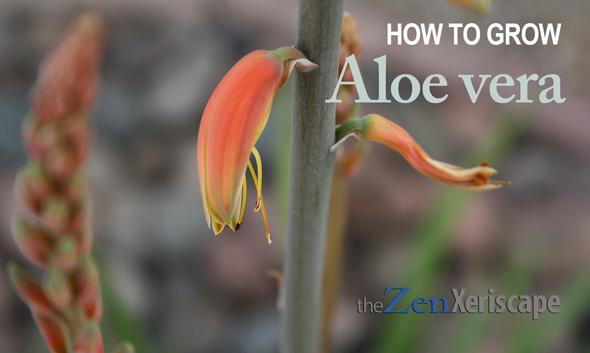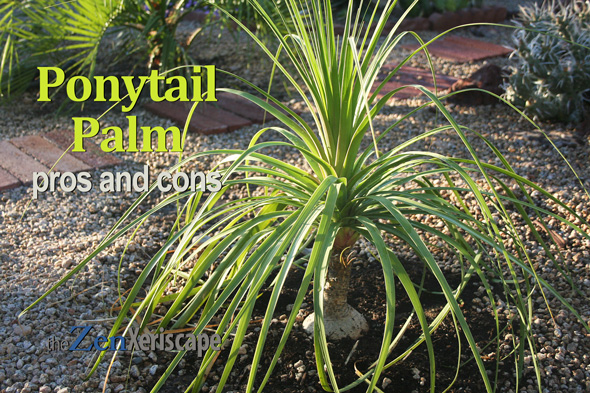Despite its hardiness and ease-of-care, the ponytail palm can suffer from heat stress.That’s especially true if you’re located in an area with extremely hot summer temperatures. So, how can you protect your ponytail palm from the ravages of summer heat? Here are a couple of ponytail palm heat stress prevention guidelines.
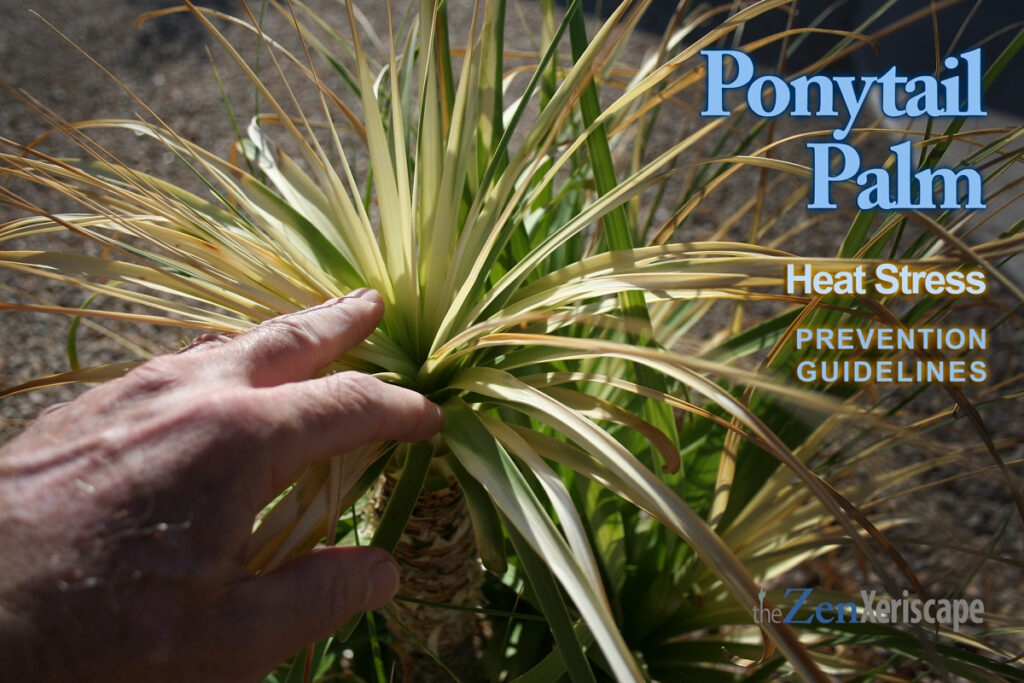
and the tips are getting brown
and dry, which are symptoms
of heat and sun stress.
Photo by Doug Martin
My ponytail palm lives in sunny southern Arizona
Unfortunately, I placed my ponytail palm in a very sunny part of my landscape. And, we live near Phoenix, Arizona, one of the sunniest places in the United States! Right now, temps are over 100 degrees F and it stays warm throughout the night.
However, it is already well-established in its position, and has a very good root system. So, I don’t want to move it to another location. What can I do?
Signs of ponytail palm heat stress
At this point, I’m not going to worry about it. Next year, though, I’m going to fix it so it does not get stressed out each summer. So, here are the clues if your ponytail palm shows signs of heat stress. They include:
—brown tips and edges of leaves
—bleached leaves that look almost white
—crispy, dry leaves
Mine started showing those signs of heat stress in late July. Now, it’s early September, and I believe the worst is over. So, every year, my ponytail palm exhibits those signs, but quickly recovers as more moderate temperatures take over.
But, if I were able to plant my ponytail palm again, at a different place in my landscape, here’s some of the things I would consider.
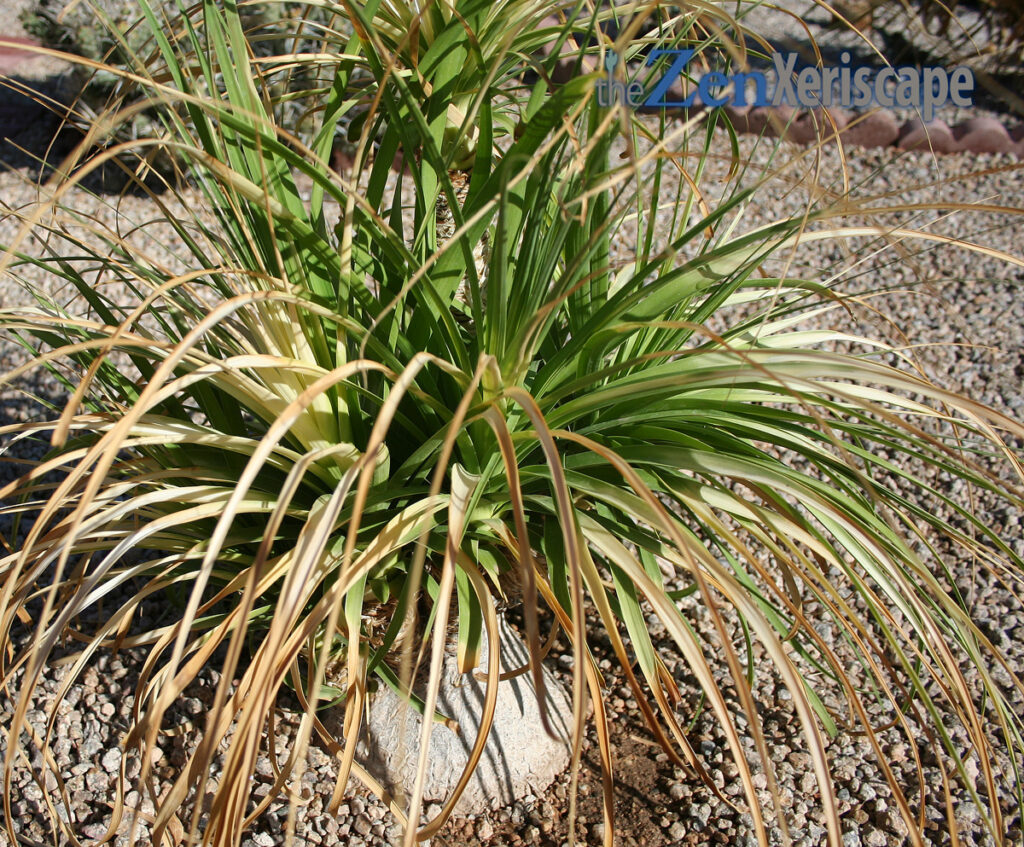
in a location that receives afternoon shade.
But, I can still use sunblock
shade cloth to provide relief.
Photo by Doug Martin
Get a free 30-day trial of Prime! (As an Amazon Associate, I earn a commission from qualifying purchases.)
Ponytail palm heat stress prevention guidelines
Avoid afternoon sun:
While the ponytail palm does well in full sun in more moderate climates, it does appreciate afternoon shade. The shade gives this plant a respite from the harsh, damaging rays of the sun.
For instance, you might plant it under a larger tree, like a palo verde tree or even close to a flowering bougainvillea! Either of those plant combinations would look wonderful.
In my case, I planted my specimen in full sun! Why? I thought it would look nice there. So, maybe this fall, I’ll carefully transplant to another more appropriate and shadier location.
Use sunblock shade cloth:
Most garden centers have their potted plants under shade cloth. Did you ever notice that? It’s true. Even the big-box DIY garden centers use shade cloth to protect plants from the harsh sun.
Now I’ve never used sunblock shade cloth, but that would be an inexpensive, quick solution, to protect my ponytail palm from the harsh afternoon sun.
It would be as easy as installing inexpensive chicken wire around the plant, and draping the sunblock shade cloth over and around the plant. In case of wind or stormy weather, you could bring the shade cloth indoors.
Shade cloth comes in different percentages of protection, normally 55% would work well. And if 55% isn’t blocking enough, just fold the cloth over for more protection.
Browse for sunblock shade cloths on Amazon! They are an inexpensive solution! (As an Amazon Associate, I earn a commission from qualifying purchases.)
Adjust amount and frequency of water:
As always, water deeply, but only when the soil is completely dry all around the palm’s bulbous trunk. During the summer, I water my ponytail palm deeply once-a-week.
During the hotter weeks of summer, increase the frequency. But, be extremely careful—this plant is very sensitive to overwatering. In the past few weeks, I have added a second day of irrigation. Again, I water deeply, but with less volume of water.
Above all, be sure no water ponds around or up against its trunk. The bulbous trunk is so susceptible to rotting, that it would kill your ponytail palm.
Apply mulch:
Apply mulch around the base of the plant. But, do not let the mulch touch the trunk. Again, the mulch could retain water, and if it contacts the trunk, it could stimulate rot.
Personally, I’m a little leary of adding mulch around my ponytail palm. Sure, mulch does retain moisture, but moisture can be an enemy to this palm tree. So, I am not going to add mulch.
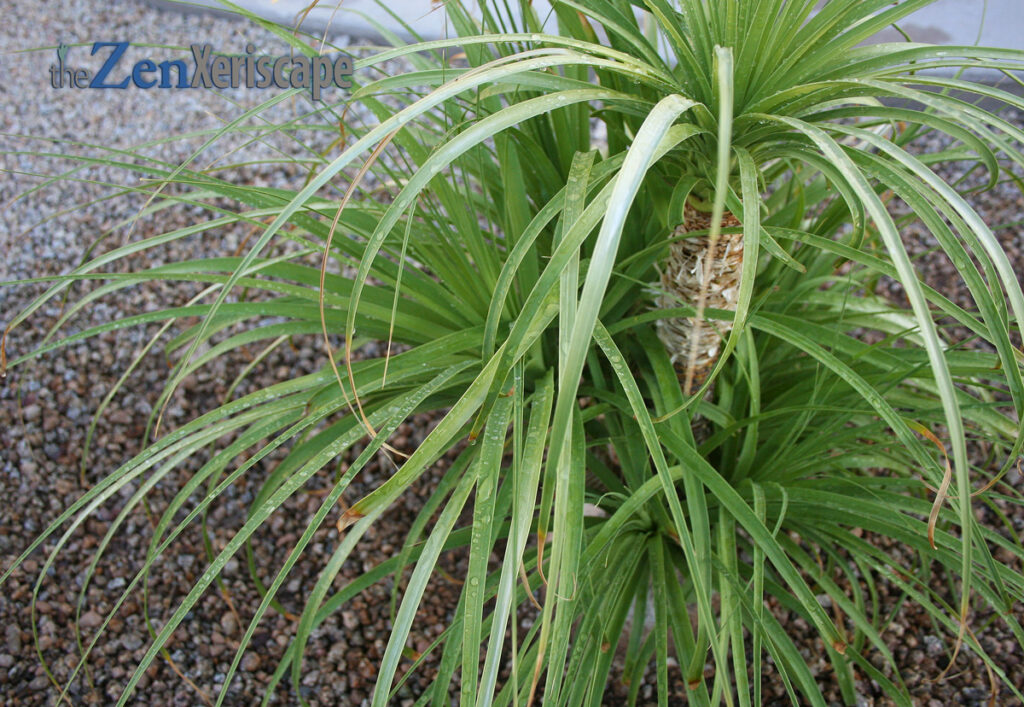
before high temperatures and the sun
began stressing out my ponytail palm tree!
Photo by Doug Martin
Garden mulch is available on Amazon! (As an Amazon Associate, I earn a commission from qualifying purchases.)
My plan of action:
Ponytail palm heat stress prevention guidelines
My immediate plan is to do nothing. The days are getting less hot and the nights are getting cooler. Already, some green is returning to the new leaf growth. So, I’m certain my ponytail palm has made it through our horribly hot summer intact. They are pretty tough and resilient plants.
But, I am going to purchase wire fencing and sunblock shade cloth for subsequent summers. Doing that one thing would be a tremendous boost to my palm tree’s health in the future. And, maybe my ponytail palm tree would grow faster—that would be nice!
Content and photos by Doug Martin and The Zen Xeriscape

Get a free 30-day trial of Prime! (As an Amazon Associate, I earn a commission from qualifying purchases.)

